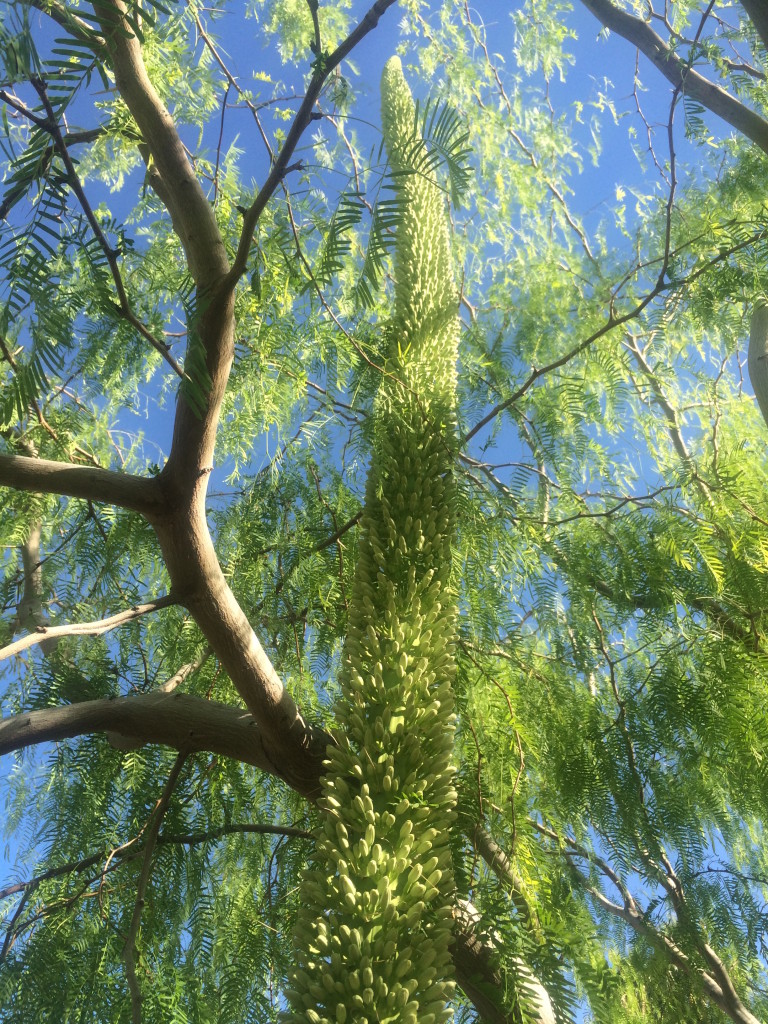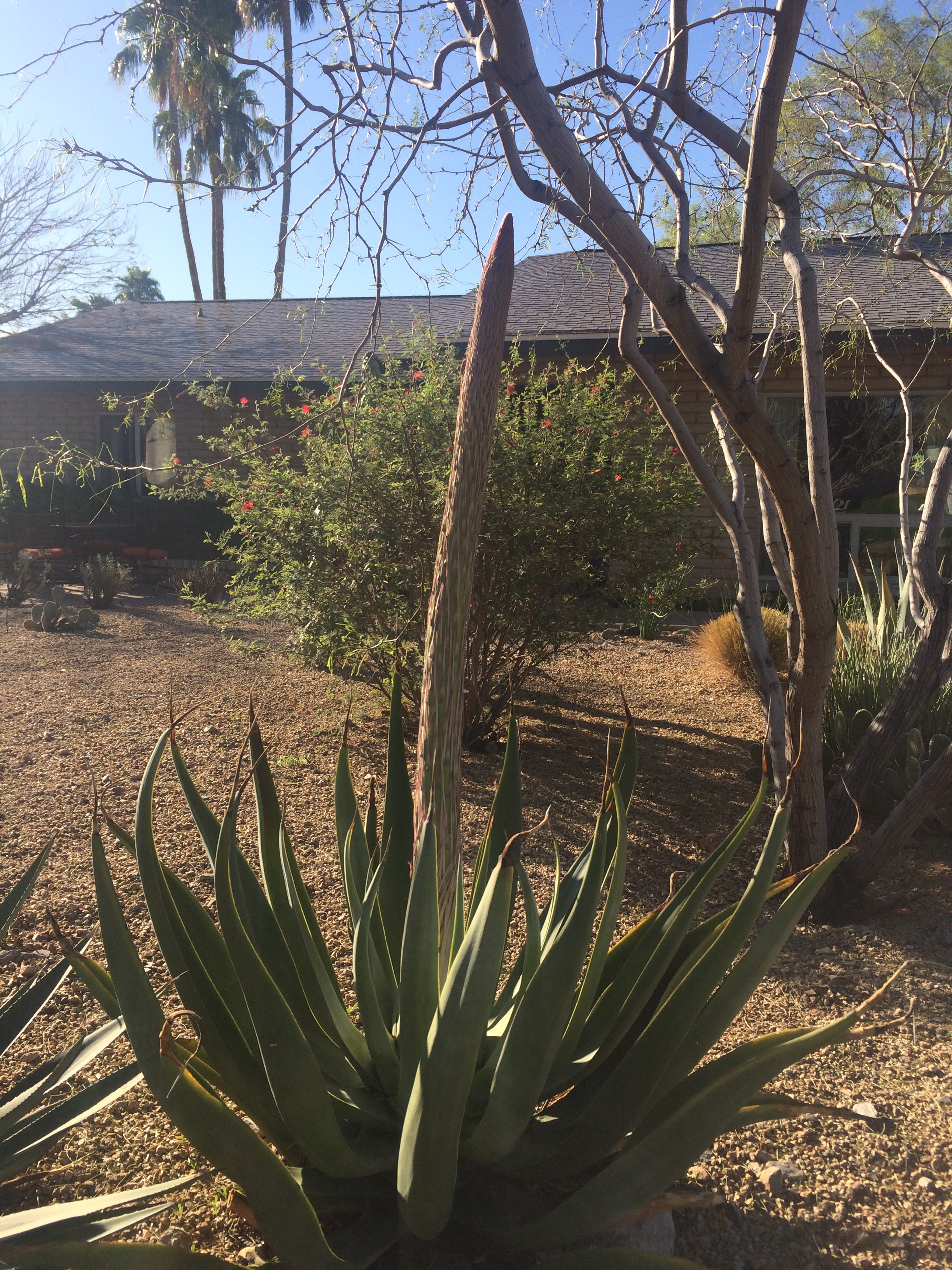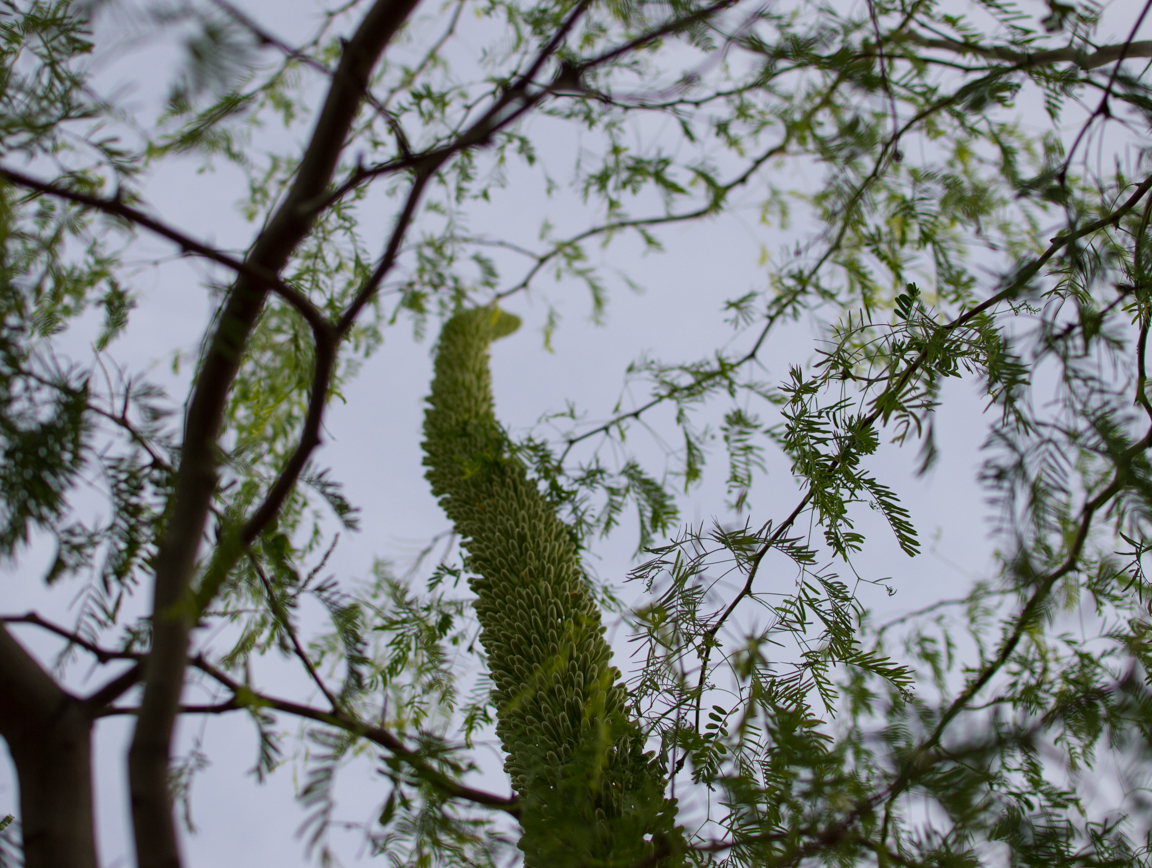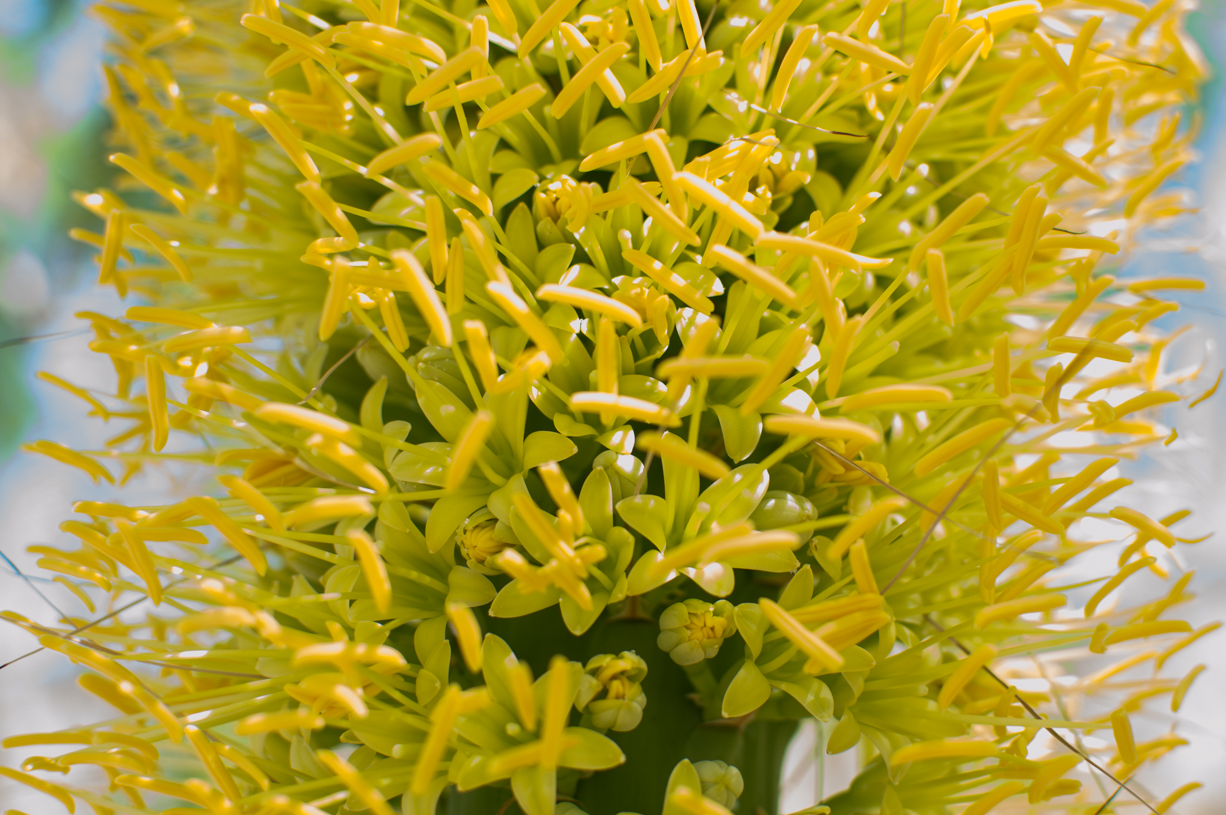
If you have noticed, there is an usually high number of Agaves blooming this year. Talk around the industry says it’s likely due to the warm winter, but whatever it is, there are plenty of magnificent flower stalks teetering in the wind to enjoy for the next few months.
What happens after the flowering is unfortunate: blooming is an Agave’s farewell to the world, leaving behind its seed or pups for future generations. It’s always a sad moment when I break the news to a homeowner that Agaves die after they finishing blooming. “Oh but why” they say… “if I cut off the flower stalk will it still die?” Yes, sorry but the Agave truly is saying goodbye.


The good news is, most Agave species produce pups adjacent to the main plant, and the removal of the larger blooming Agave won’t be as noticeable when its melting downwards towards the earth. However, some Agave, like the octopus agave (Agave vilmoriniana) rarely sends out pups so replanting is needed if you’d like this species to continue filling in the space.
Some species will push flowers from the stalk, while others will produce bulbils, which when they fall to the ground, will begin to take root. Louis Spector with Green by Design and I were recently discussing the Agave’s life cycle when he brought up a great point. It’s to the Agave’s benefit to have a heavy pup load at the top of the stalk. As the weight gets too heavy for the stalk, it begins to lean. When the gravitational pull is too great, it comes crashing down, sending pups flying in all directions. Success: asexual propagation dissemination!
There are over 200 species of Agave across the globe with varying life spans, some flowering only after being in the ground 5-7 years, while others can grow for at least two decades before they send out a flower stalk. Flower stalks are either in spicate form, like the octopus agave, or in a paniculate form, like the smooth agave (Agave desmettiana). The smooth agave can also produce bulbils on the stalk which, in addition to its overzealous production of pups makes this Agave the champion of self-propagation!

Blooming occurs in different seasons for each species so it will be interesting to see if other summer and fall blooming Agave species follow their winter blooming cousins. If you have an Agave that is ready to show its stuff, cherish its wonderful display this spring and give it a ‘thank you’ to show your gratitude towards its beauty and sacrifice.

